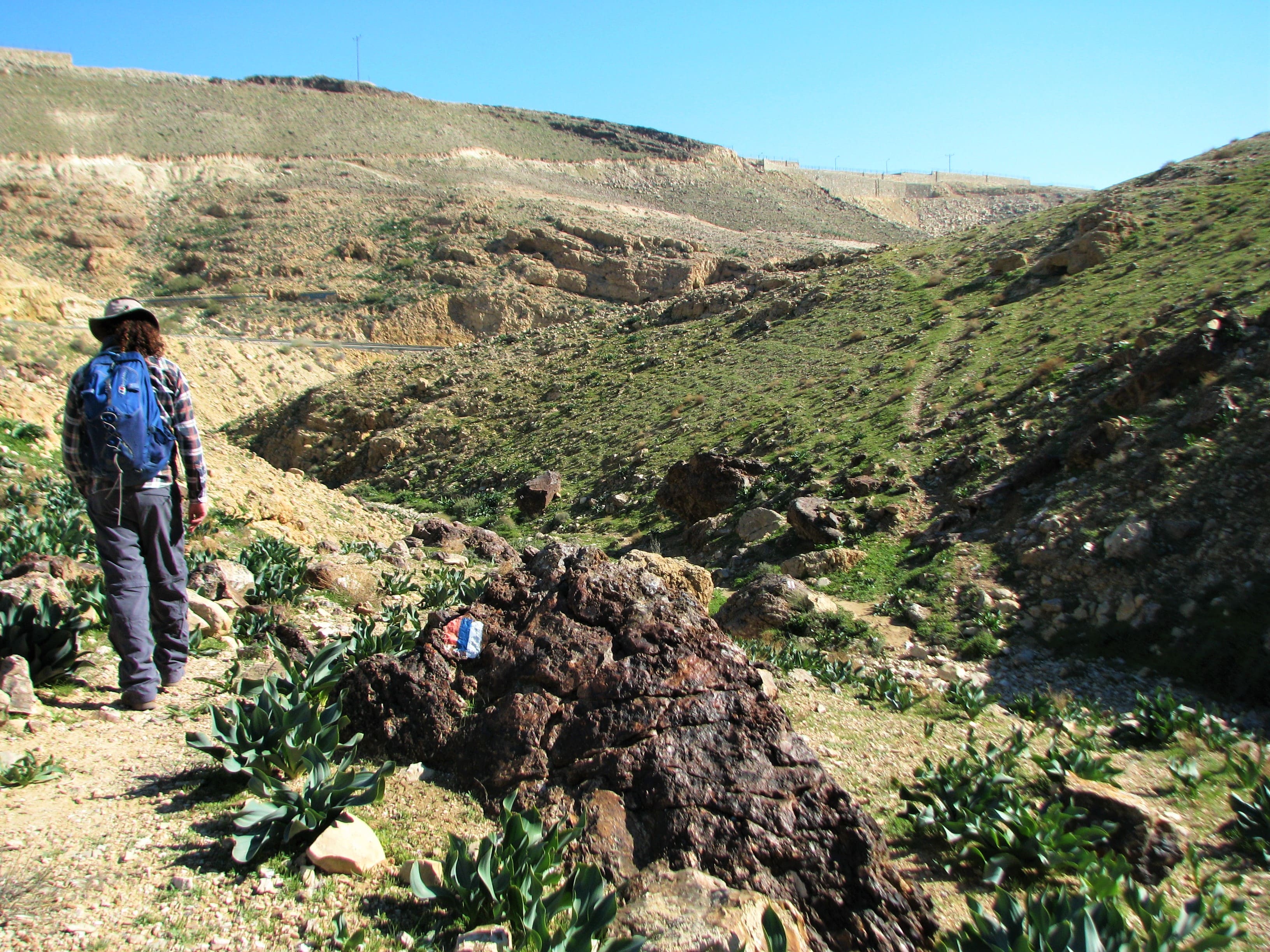“When should I do the Israel National Trail?” is usually the first question that pops up after you’ve made the decision to do this extraordinary walk across Israel. I’ve devoted the first of a series of articles on the Israel National Trail to fundamental information relating to this trail in particular, including the question of when to do it. I hope these articles assist you in planning, preparation and orientation for the trail.
When To Do the Israel National Trail and How Long It Takes:
The Israel National Trail covers a distance of 1,000 km (620 miles), and takes an average of 45-50 days from start to finish. You should, in fact, allocate a full two months for the trip. Your pace, the number of days you stop for breaks (such as over Shabbat) and the incorporation of extra activities on the way (such as volunteering) will all affect how long it will take you.
Whether you plan to do the whole or only certain segments of the Israel National Trail, the best seasons are autumn and spring. During transition seasons, the Israeli climate is mild which makes it an ideal time to do the trail. There are however a few important details you should know about each season:
Autumn:
Recommended Direction: North to south | When: September to November
Why? As autumn proceeds, the weather gradually cools down. Traveling south enables you to still enjoy pleasant weather in the south that lingers into the last few months of the year. Leaving any later (from December onwards) is no longer worthwhile since the weather can affect continuity, with a greater chance of rain and flooding that pose a safety threat. Also important to note is that limited daylight hours means you’ll need to begin your mornings as early as possible.
Spring:
Recommended Direction: South to north | When: February to March
Why? You start in the desert where the air is still cool. As summer nears and the weather begins to warm up, the trail takes you to cooler and shadier regions in the north. Spring also comes with the advantage of spring blossoms, when flowers color the landscape along the route. Natural springs, reservoirs and other water channels are also full at this time.
***
You do have more flexibility in choosing a direction if you decide to do only a segment of the trail (with a duration of two days to one week). However, it’s not really recommended to do the trail in the summer months (June-August). Hot weather poses too great a risk on a long trail, especially in the desert. Winter, on the other hand, is still an option in some parts of southern Israel as long as you make sure to plan in advance, choose your route wisely and heed all warnings regarding flooding.
What Basic Equipment Do I Need?
Backpackers, novice travelers or hiking enthusiasts with prior experience on the Israel National Trail should all have these basic essential items:
Shoes – Closed shoes are highly recommended. Hiking shoes are better than sneakers or Australian-style boots (Blundstone, Redback, etc.) and a good hiking shoe should have tread grooves for maximum traction on both dirt and rock. Make sure you try on the shoes and wear them in a little before your trip.
Backpack – I recommend backpacks with a waist belt, which are available in small, medium and large. This is essential for correct distribution of weight (so that your pelvic bone – not your shoulders – carries the load). Make sure it’s comfortable and has space for large water bottles. A 25-30 liter backpack is sufficient for one-day trips. Two days to one week require a 40-50-liter backpack, and extended trails require a 60-80-liter backpack.
Trekking Poles – VERY important! Believe me, your knees will thank you. Trekking poles help you set a pace, steady you on descents and pull you up inclines. Always use both poles.
Headlamp – A good item to have stowed in your bag and relevant mainly for trips that include overnight stays. Don’t rely on your phone flashlight. It’s always better to keep phone usage to a minimum in case of an emergency.
Map – Ok, so nowadays we have all kinds of map apps and GPS accessibility, but they’re not a substitute for the real thing. Pack an up-to-date trail map of the Israel National Trail. The best maps out there are those issued by the Israeli Society for the Protection of Nature or “ShvilNet” with recognized marked trails. Make sure that the trail segment and/or route you have chosen appears on the map.
The same rule of thumb applies to trips of a few days or a few weeks: Pack only what you really need. The less you’re tempted to take and the less weight you carry, the more you’ll enjoy your trip. “Travelling light” is not a simple task and novice travelers often schlep more than is necessary. Of course, these skills come with experience.

